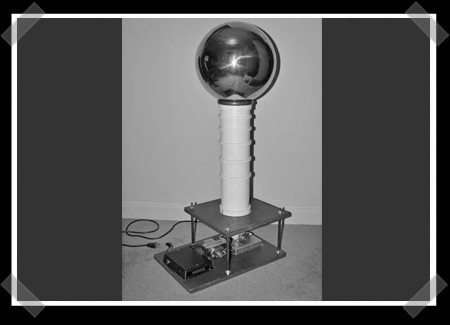[Nickademuss] has put together these great instructions on how to build a 900,000 volt Van De Graaff generator. For those unfamiliar, Van De Graaff generators produce massive amounts of static electricity. They are usually the things you see in science centers that make people’s hair stand on end. [Nickademuss] put a lot of effort into this, he created 3D models and diagrams for many of the steps and gave a very detailed step by step breakdown.
classic hacks2782 Articles
Sony Vaio UX 64GB Solid State Upgrade

This Sony Vaio UX50 came with a 30GB hard drive from the factory. This hacker wanted to do an upgrade and move to solid state, so he started hacking away. He ended up with a total of 64GB of solid state storage crammed into the computer. The hard drive was replaced with a 4GB compact flash drive and the rest is spread through out the device. Apparently any crevice or crack in the Sony UX50 can have memory shoved into it. He managed to somehow get 60GB of storage in there through various USB extensions and adapters. Notice the sticker on the inside of the case. Is this the latest fad? Decorating the inside of the unit where only you know it exists?
[thanks Jorn]
Lazy Knitting

As much as we love crazy prototype style hacks, we really enjoy seeing things that get used after their creation. [Marcus] sent us the information about his automatic yarn winder. Noticing that his friends who knit had to go through the monotonous process of winding a ball of yarn each time they started the process, he sprung into action. After finding only a few commercial solutions, which were out of his price range, he decided to build his own. He found a hand cranked version and gutted it to add a motor. Now, they simply need to get it started and walk away. Great job [Marcus].
High Speed Photography

[Shakir] sent us this fairly easy way to do high speed photography. The idea is to use a microphone to detect a sharp sound on a surface and trigger the flash. The camera is set up with a long exposure to capture the action. Assuming your room is dark enough, you shouldn’t get much ghosting in your exposure. The circuit is a two stage amplifier that engages the flash using a silicon controlled rectifier. Be sure to check out the photos, some are pretty stunning.
Cordless Drill Overhaul

[Alexander.m] shows us how to do a major overhaul on a cordless drill, replacing pretty much everything but the case. He needed some more power, but found the price tag of the bigger drills to be prohibitive. He opted for a more hacked together approach and used a 24 volt 1.4 hp hobby motor as a drive. He had to make a custom enclosure for the batteries too. The final result may not be the prettiest thing in the world, with that giant battery pack on the bottom, but it probably gets the job done pretty well and cost less than half of what a new one would have.
Disposable Camera Nixie Tube Driver

Disposable cameras are quite cheap, and include circuitry that produces very high voltages. Because of this, they have been harvested for many projects. We’ve seen them used for coil guns and large high voltage power supplies, even for fixing rechargeable batteries that won’t charge. The latest in the long list of uses is to create nixie tube drivers. [the_don125] shows us how to use a single disposable camera to power 2 to 3 medium sized Nixie tubes. Be careful, as we said before, this project deals with high voltage.
Making A Cold Heat Soldering Iron

Cold Heat soldering irons are pretty cool. They heat up in seconds and cool down just as quickly. [photozz] shows us how we can make one from stuff we probably have sitting around right now. Cold Heat soldering irons work off of resistance, the tip material heats very quickly when electricity is passed through the two halves. Upon assessing what he had lying around, [photozz] realized that graphite would work much the same way. He modified a regular soldering iron with a new two piece graphite tip, and powered it with an old pc power supply. The end result is quite nice, though it still needs some kind of temperature control. You may recall seeing other electrical uses for graphite, such as making quick and dirty light.











